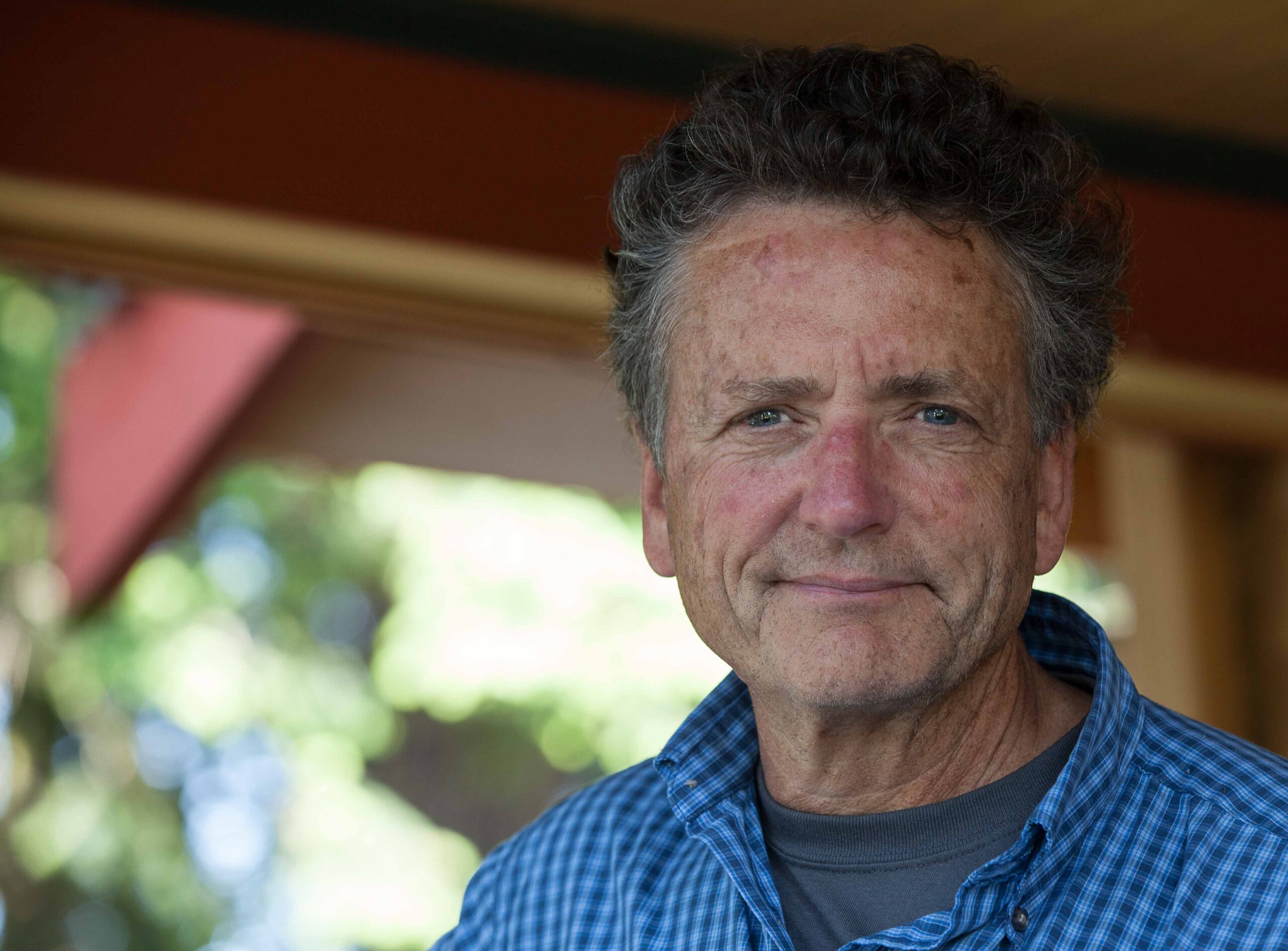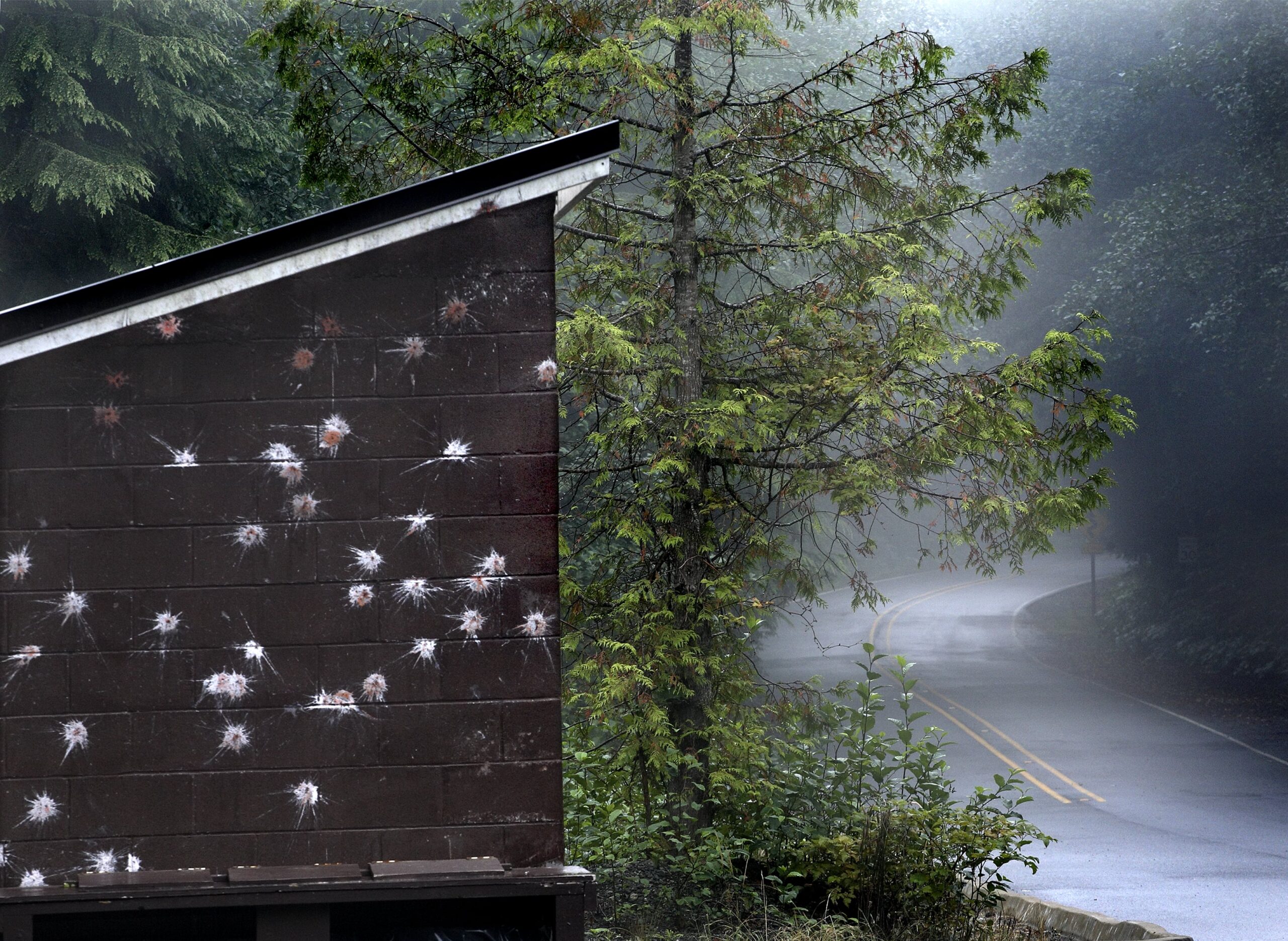Photography: A Performance
An Interview with David Scherrer
David Scherrer arrived in the Northwest from the east coast in the early 1970’s. Drawn initially by Huxley College’s Environmental Studies program (at Western Washington University), he soon realized the potential for the integration of media production and environmental education, two areas of study he was passionate about. He completed his undergraduate education at WWU and continues to maintain connection with Western through his photography.
David’s photograph titled Cape Flattery is featured on the cover of this edition of the Bellingham Review. Cindy-Lou Holland interviewed him at his home in Washington.
Cindy-Lou Holland: Your website contains both commercial and fine art photography. How do those genres echo each other in your work?
David Scherrer: Well it’s interesting, Ansel Adams said years ago (I studied with Ansel back in the ‘70’s in Yosemite), “Commercial work is an assignment from without, while artwork is an assignment from within.” They both complement each other in a way. It’s like playing tennis; whatever you can do to maintain your practice is helpful.
CH: I’m taken with your attention to lines, and the distinction between light and shadow in your work. Can you share a bit about what inspires you artistically?
DS: I do think consciously about negative and positive space and composition. In the ‘70’s I used to regularly go out to Larrabee State Park [near Bellingham, WA] and walk the shoreline, and just be totally entranced by the sandstone formations on the shore. I would go out there at least once or twice a week. I did that for years. I took lots of shots, most of them probably not successful, but still it was a process, and I still go there today. I don’t get bored with the environment around here.
CH: But you also travel quite frequently. Does traveling help you see home differently?
DS: A lot of the work that I’m doing these days, and over the last 10 years, is work from overseas, work from my travels in Greece, Turkey, Scotland, and Ireland. In a perfect world I should be able to wake up everyday and be able to see things in a unique light, and then work with that to create new imagery that is exciting and fresh, but that’s sometimes tough. I think location can really help an artist, and excite an artist, and stimulate new ways of interpreting the environment.
I also think it’s really helpful to recharge your batteries by traveling, you can get a little more complacent living or staying in one place… At least it happens for me. My wife really enjoys getting out and getting a charge out of visiting a new place, kind of refreshing your vision, it is helpful, very helpful.
CH: There’s a spiritual quality to that too, isn’t there? When visiting places you tap into energy that’s a little different, perhaps. How about traveling within Washington? What do you find compelling about this region?
DS: Well, it’s pretty wild and rugged, and there’s this great energy of the Pacific, the open Pacific coming rumbling into the rugged shorelines, with a lot of rock outcrops, and pinnacles, and a lot of wonderful wildlife, a lot of diving birds, and all sorts of shore birds. Since a lot of it is Native American reservation, a lot of it hasn’t been developed and it’s just a unique and wild area. All up and down the Northwest coast, and the Olympic peninsula, is pretty glorious.
 (Photograph by Cindy-Lou Holland)
(Photograph by Cindy-Lou Holland)
CH: And much of that wilderness is reflected in the image that was chosen for the cover of this edition of the Bellingham Review, a photo titled Cape Flattery; a dreamy, mystical landscape juxtaposed with a paint-gun-splattered building sitting on the side of the road on the Olympic Peninsula. I’m struck again and again by the strong lines of the building, with its roofline pointing toward the bend in the road, but the paint splatters are so random and wonderful against the softness of nature. There’s a lot happening here—perhaps you can start with how this photo came about?
DS: Well I was as surprised as you are, and you’re right about the angle of the roof and pointing your eye towards the road as it disappears into the distance, and the mist…. And I really can’t explain the paint splatters, besides that I found them very intriguing and interesting, quite a mental contrast to the rest of the environment—a very soft environment—then you have these paint splatters.
Also, I suppose one could look at it as a political statement, as if there is this protest of this building that is located in this very scenic and beautiful environment. I think it was a storage building for road maintenance. I’m not sure, but it’s almost like I could envision in my own mind’s eye that someone saw that structure and hit it with a paint gun because they just didn’t like it being there, and I can understand that. So there’s this statement going on, beyond the visual composition of the elements of that image.
 (Cape Flattery by David Scherrer)
(Cape Flattery by David Scherrer)
CH: I agree, when I first saw the image I thought the paint splatters looked playful, but in hearing you say that, I can see that there’s a violence to it, a political statement perhaps calling out these two sides of humanity, the protector and the encroacher, with nature kind of standing silently by, watching the entire thing unfold.
DS: Right! And this is an area that has been inhabited by the Makah near the Neah Bay region for at least 20-30,000 years. So this has been their home, for so long. You know, how these people respond to the encroachment of our own culture… The interaction is complicated, and can be expressed in unique ways.
CH: Did you see this spot when you were out driving?
DS: Yes, that is a road access to the Cape Flattery trailhead, that’s where you go to hike out to this point, and you’re looking almost from the end of the road which is probably the westernmost road in the Northwest United States. Looking back, from the direction you’re coming, there is the building.
CH: What happened when you saw this scene in front of you?
DS: It’s definitely a process, I come from more of a traditional background to where most of the work I did up until about 20 years ago was done with a view camera, where you spent a lot of time carefully thinking about what you were going to photograph, and then arranging your tripod and your composition, getting under the black cloth, etc., so I’m used to taking a while to compose.
These days of course, it’s a lot faster, and I do appreciate the technology that we’re using today. But I still seem to pace around, hunting, waiting for something to hit me, and I’m thinking about some basic conceptual ideas of composition, and positive and negative space. And maybe even some philosophical ideas, I’m thinking about other photographers, and other artists, and works I like, and why. So I’m wandering through this environment with all these thoughts in my brain, and I’m looking and looking, and then it starts to happen, and I’m starting to feel something that’s being shown to me and then I combine the elements on that frame. But it’s almost like what I’m doing is music, I’m writing down the notes as I sense them, and then how it’s played is how I then do the post production and how I print it. It’s a performance. That’s not an original analogy by the way; Ansel Adams came up with that one too.
CH: This is fascinating to me; there is such a contrast to the hurried pace and volume of images in contemporary social media. You’re talking about waiting for the environment to reveal itself to you as opposed to approaching it and just kind of clicking away, trying to impose your vision on this place.
DS: Well, that statement is a nice thought, but of course I am also ultimately imposing myself on it.
CH: True, you still have to produce something, right? You still have to choose what ends up in your final image. But it sounds like you do a lot of things to put yourself into a position to receive.
DS: There’s so much here to see and do, I’m always amazed, I’ve been here since 1973, and I’ll head out the door, hop on a mountain bike, and find new trails; up Chuckanut Mountain, or up Cleater, places like that, places I’ve yet to find or discover, and it’s like “Wow… There’s so much here to explore.” Just to get out is usually rewarding.
View more of David Scherrer’s work on his website: scherrerphoto.com.
CINDY-LOU HOLLAND is an MFA Candidate in Creative Writing at Western Washington University, and a part-time professional photographer. Interviewing David Scherrer for the Bellingham Review provided an opportunity to speak with an accomplished photographer whose connections with Western run deep, and whose interest in slowing down to really see the world mirror her own.